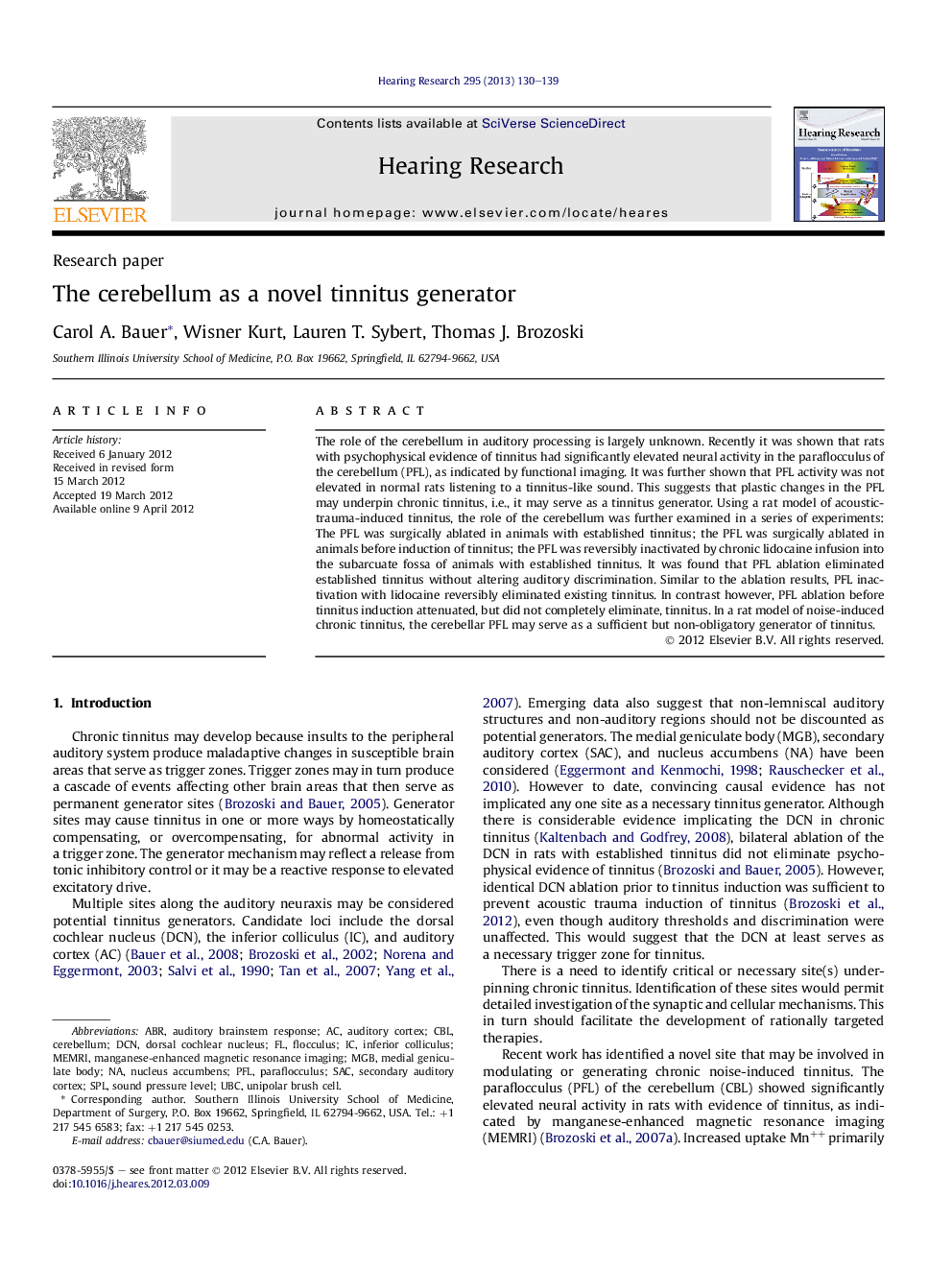| Article ID | Journal | Published Year | Pages | File Type |
|---|---|---|---|---|
| 4355306 | Hearing Research | 2013 | 10 Pages |
The role of the cerebellum in auditory processing is largely unknown. Recently it was shown that rats with psychophysical evidence of tinnitus had significantly elevated neural activity in the paraflocculus of the cerebellum (PFL), as indicated by functional imaging. It was further shown that PFL activity was not elevated in normal rats listening to a tinnitus-like sound. This suggests that plastic changes in the PFL may underpin chronic tinnitus, i.e., it may serve as a tinnitus generator. Using a rat model of acoustic-trauma-induced tinnitus, the role of the cerebellum was further examined in a series of experiments: The PFL was surgically ablated in animals with established tinnitus; the PFL was surgically ablated in animals before induction of tinnitus; the PFL was reversibly inactivated by chronic lidocaine infusion into the subarcuate fossa of animals with established tinnitus. It was found that PFL ablation eliminated established tinnitus without altering auditory discrimination. Similar to the ablation results, PFL inactivation with lidocaine reversibly eliminated existing tinnitus. In contrast however, PFL ablation before tinnitus induction attenuated, but did not completely eliminate, tinnitus. In a rat model of noise-induced chronic tinnitus, the cerebellar PFL may serve as a sufficient but non-obligatory generator of tinnitus.
► The paraflocculus of the cerebellum may be a sufficient, but non-obligatory, generator of acoustic-trauma-induced tinnitus. ► Parafloccular ablation eliminated pre-existing psychophysically indicated tinnitus in rats. ► Inactivation of the paraflocculus, with lidocaine, reversibly eliminated pre-existing tinnitus and hyperacusis in rats. ► Pre-emptive parafloccular ablation blunted, but did not prevent the onset of acoustic-trauma-induced tinnitus in rats.
